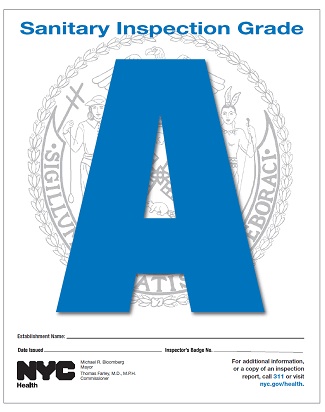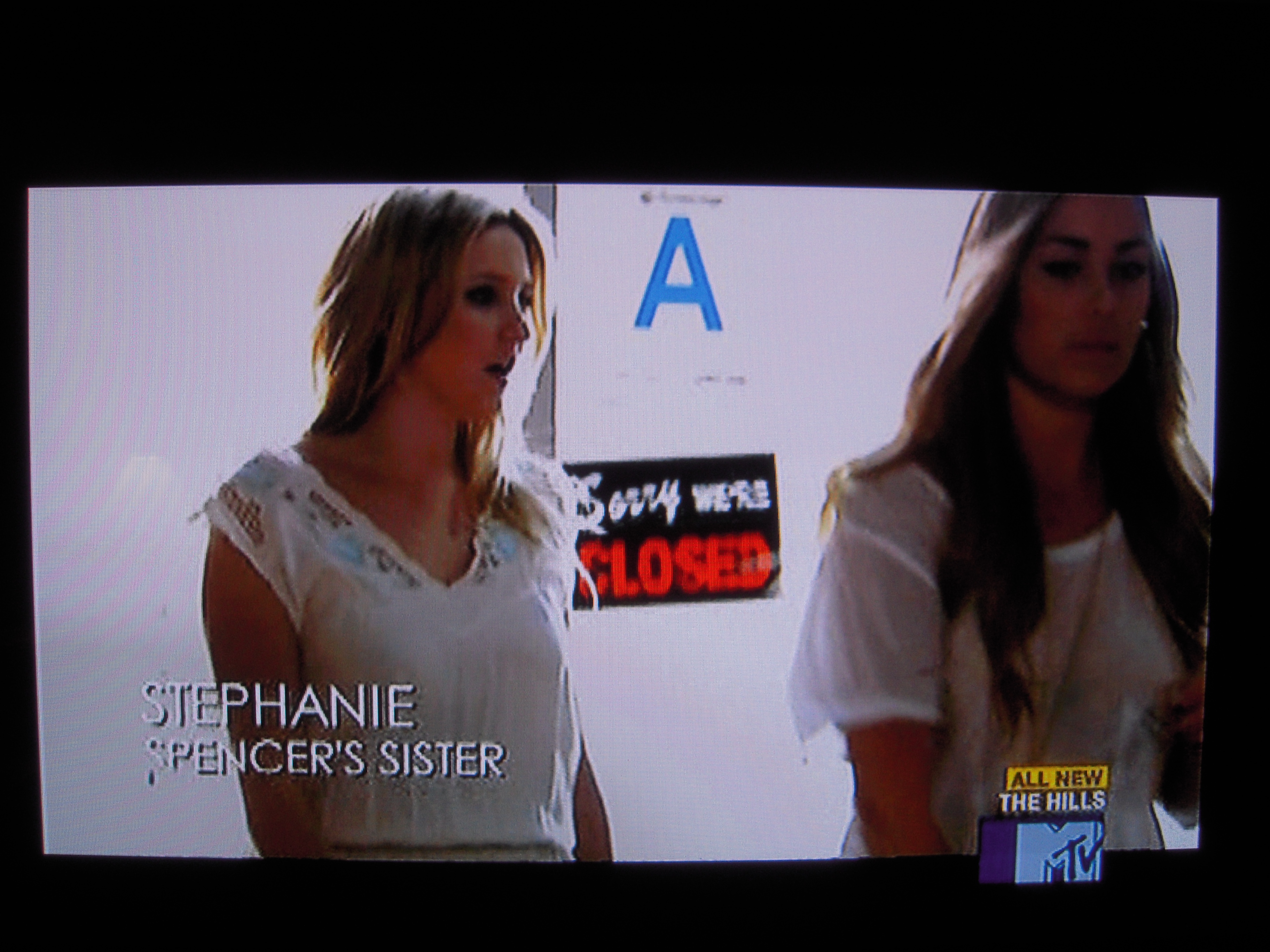
New York City is going to adapt a Los Angeles-style display and disclosure system to, according to the Board of Health, “to give consumers more information on the sanitary condition of New York City restaurants.”
 Good for them, although no research has been done comparing the effectiveness of various disclosure systems – letters (proposed NYC display, right), colors (like in Toronto), smiley faces (like in Denmark), and the prominence of the display (big signs in front windows or little signs behind the greeters table).
Good for them, although no research has been done comparing the effectiveness of various disclosure systems – letters (proposed NYC display, right), colors (like in Toronto), smiley faces (like in Denmark), and the prominence of the display (big signs in front windows or little signs behind the greeters table).
But we’re working on that, with barfbloggers Katie, Rob and Ben (and sometimes me) all conducting such research in Canada, New Zealand, and the U.S. respectively.
In New York City,
The new initiative requires all restaurants to publicly display letter grades that summarize the results of Health Department food-safety inspections. Besides helping New Yorkers make informed choices, letter grades will promote food safety by making restaurants directly accountable to consumers.
Under the new system, restaurants will receive grades based on the number of violations documented during their sanitary inspections. Each establishment will post a placard at the point of entry, showing its current sanitary grade, and restaurants receiving A grades will be inspected less often than those receiving lower marks.
 Letter grades will make the inspection process more transparent, giving every potential customer instant access to important information. At the same time, the risk-based inspection schedules will focus City resources on restaurants that warrant the most scrutiny. The Health Department plans to enact the new system in July.
Letter grades will make the inspection process more transparent, giving every potential customer instant access to important information. At the same time, the risk-based inspection schedules will focus City resources on restaurants that warrant the most scrutiny. The Health Department plans to enact the new system in July.
AP reports the New York State Restaurant Association has called the system gimmicky and unfair.
Marc Murphy, a vice president of the association and the owner and chef at the Manhattan restaurants Landmarc and Ditch Plains, said,
They’re doing a disservice to the public,” and that the letter grading system will serve to embarrass restaurateurs without giving the public a true picture of the establishment’s cleanliness.
Those are familiar complaints, popping up every time a city or county or region or state tries to do something. I see little or no evidence to support the complaints.
The Board of Health also said the ultimate goal is to improve sanitary conditions and reduce the risk of food-borne illness. Tainted restaurant food causes several thousand hospitalizations in New York City each year, and as many as 10,000 emergency-room visits. After Los Angeles instituted a letter grading system, the proportion of restaurants meeting the highest food-safety standards rose from 40% to more than 80%, and hospitalizations for food-borne illnesses fell.
Robert Bookman, counsel for the restaurant association, assailed the city’s claim that incidents of food-borne illness dropped in Los Angeles after the implementation of a similar system there, noting that that city had also simultaneously begun requiring restaurant staff to take food safety classes for the first time.
 Providing demonstrable evidence linking disclosure with a decline in foodborne illness is a stretch – there are too many mitigating factors to control for. I argue disclosure enhances the food safety culture of restaurants and the community because people really talk about these things, which may indirectly result in fewer people getting sick. And disclosure provides information that citizens in a democracy are entitled too.
Providing demonstrable evidence linking disclosure with a decline in foodborne illness is a stretch – there are too many mitigating factors to control for. I argue disclosure enhances the food safety culture of restaurants and the community because people really talk about these things, which may indirectly result in fewer people getting sick. And disclosure provides information that citizens in a democracy are entitled too.
Now, how to make these disclosure systems better.
More information on the proposed NYC restaurant grading system is available at
www.nyc.gov/html/doh/html/notice/notice.shtml
